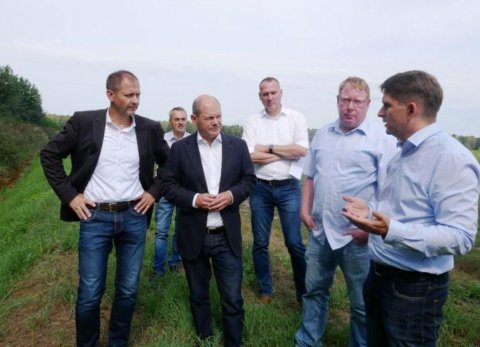Warning: what follows is about obscure bureaucratic battles. That may seem extraordinarily boring, but it is exactly the field of battle on which the future of this planet will be won - or lost.
The European Commission knows that to achieve the objectives laid out in the European Green Deal, profoundly changing the way we manage Europe's farmland will be absolutely crucial, an insight reflected in its flagship Farm to Fork strategy, its Biodiversity Strategy and its Forestry Strategy.
However, this failed to have the hoped-for influence on the negotiations of the new CAP, or Common Agricultural Policy, which was recently approved by the European Parliament. This did not come as a surprise to the cognoscenti, and not only because the proposals for the new CAP dated from the previous European Commission and broadly failed to take the planetary emergency into account. A crucial factor was that the changes in management practices this emergency requires are not supported by large farmers or the agrochemical industry. As the latter spends about €10 million a year in lobbying, its voice counts for a lot more than that of simple reason.
It is in that context that we must read the efforts made by DG CLIMA, the European Commission’s Climate Directorate-General, to encourage the adoption of so-called carbon farming across the EU: if the current CAP does not mandate these measures, the least the Commission can do is to encourage member states to adopt them in their own CAP Strategic Plans (these Strategic Plans are the silver lining of the new CAP, theoretically giving EU member states the flexibility to innovate in their own agricultural support measures).
DG CLIMA therefore launched a carbon farming initiative, which commissioned studies and ran a number of workshops to unpack the concept. The initiative unsurprisingly concluded that agroforestry, along with peatland rewetting, was the most important intervention farmers across a range of production systems could adopt to mitigate their emissions. Good news, right?
Only up to a point. As we all know, it is not enough for a science report highlighting something for it to be recognised and adapted by policymakers and economic actors. That requires shouting it from the rooftops, repeatedly. As advertisers like to say, the three most important words to get a message across are: repetition, repetition and repetition.
Our President, Patrick Worms, who spent some of his youthful years in an advertising agency, thus seized an opportunity offered by one of Brussels' most influential green groups, the EEB or European Environmental Bureau, to contribute to its flagship publication on carbon farming. That document is being referred to in a number of fora in Brussels, and led to requests by other directorate generals for assistance in the drafting of their own documents and guidelines for member states (we've been asked to keep that quiet for the time being, so sorry for the lack of details).
This document can be useful at a national level as well. Just run it through Google translate into the language version you need and distribute it to your own influencers in media and policy. And keep your eyes and ears open for any opportunity to keep on pushing the no-brainer that is agroforestry.












